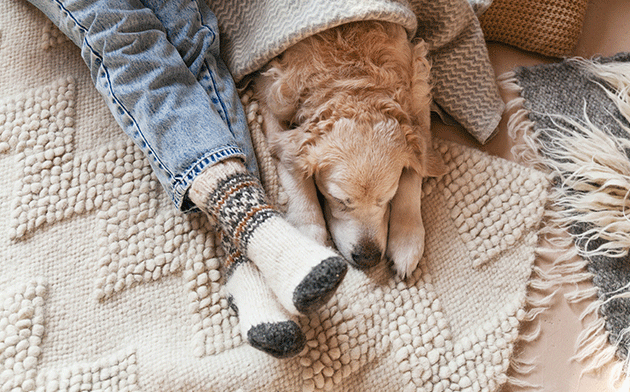La Niña is predicted to make another appearance this winter.
What does that mean for the Pacific Northwest? For one, colder and wetter conditions through February. It also adds a little urgency to preparing your home and vehicle—and the need to take extra precautions on the road.
 In the event of storm damage or an accident, it’s good to know what your homeowners insurance and auto insurance will cover. Should you need to adjust your policy, start by comparing rates from a variety of local, regional, and national insurance carriers, then contact a SELCO Insurance Services specialist to get the ball rolling. Then, follow these tips to help winterize your home and car—and drive safely in less-than-ideal conditions.
In the event of storm damage or an accident, it’s good to know what your homeowners insurance and auto insurance will cover. Should you need to adjust your policy, start by comparing rates from a variety of local, regional, and national insurance carriers, then contact a SELCO Insurance Services specialist to get the ball rolling. Then, follow these tips to help winterize your home and car—and drive safely in less-than-ideal conditions.
Winterizing your home
When the weather outside is frightful, it’s comforting to know the inside of your home is warm and safe. Here are a few tips to help protect your home from the elements.
- Start from the top down. When ice, snow, and debris accumulate on your roof and in your gutters, ice dams can form, causing water to leak into your home (which can lead to extensive damage). Prevent ice dams by fixing damaged shingles, clearing debris from your roof and gutters, and prepping your attic.
- Protect the pipes. Remember to unscrew outdoor hoses and cover the spigots. When the temperature plummets, run a light stream of water at any temperature in a few indoor faucets to guard against pipes freezing or bursting. You can also keep bathroom and kitchen cabinet doors open so warm air can circulate around pipes.
- Seal yourself in. Fall is a great time to check for deteriorated sealant around windows, doors, siding, roof fasteners, and any other penetrations or gaps. Re-caulking, as necessary, can help prevent moisture and air intrusion, not to mention costly future repairs.
- Hunker down safely. Power outages are common in the winter, for various reasons. If you have a fire or candles burning, don’t leave them unattended, and ensure they’re completely extinguished when you go to bed. Using a generator? Make sure it’s used outdoors and away from windows. For more winter safety tips, visit Oregon.gov.
Staying safe on the road
Oregonians will never forget the 2024 ice storm, when cars were sliding around like hockey pucks and trees were coming down all around us. In these extreme weather events, it’s always best to just stay home. But in case you need to brave the harsh conditions, make sure your car is fully stocked with safety equipment and you practice safe driving. Here are a few tips to help you prepare.
- Check forecasts before traveling. If there’s a storm coming, consider leaving early (or late) to avoid the worst of it, or map a less treacherous route. The National Weather Service website and FEMA app will help alert you to forecasted conditions.
- Give your vehicle some TLC. If you haven’t had your car serviced in a while, have a mechanic perform a multi-point inspection to check fluid levels (especially antifreeze), battery, brakes, tire pressure, and wiper blades. Depending on the roads, you may also consider putting on snow tires, all-weather tires, or chains.
- Adapt different driving habits. It will come as no surprise that in hazardous wintry conditions, you need to use more caution than on dry, clear days. Slowing down, increasing your following distance to 5-6 seconds, avoiding sudden movements, and turning on your headlights are just a few ways you can minimize risk.
- Gear up for emergencies. Pack your car with an emergency supply kit, including jumper cables, flares, an ice scraper, and blankets. In case these aren’t enough to get you back on the road, keep a roadside-assistance number handy so help is just a phone call away.
For more winter driving tips, visit the FEMA website.
Colder, wetter weather certainly makes conditions worse for your home and the roads. But a little research and preparation can go a long way to provide peace of mind and help ensure a safe and warm winter.
Insurance products and services are offered through and underwritten by SELCO Group Inc., dba SELCO Insurance Services, a wholly owned subsidiary of SELCO Community Credit Union. Business conducted with SELCO Group Inc., dba SELCO Insurance Services, is separate and distinct from any business conducted with SELCO Community Credit Union. Products offered through SELCO Group Inc., dba SELCO Insurance Services, are not NCUA/NCUSIF or otherwise federally insured, and are not guarantees or obligations of SELCO Community Credit Union. Any insurance required as a condition of an extension of credit by SELCO Community Credit Union may be purchased from an agent or insurance company of the member’s choice.


